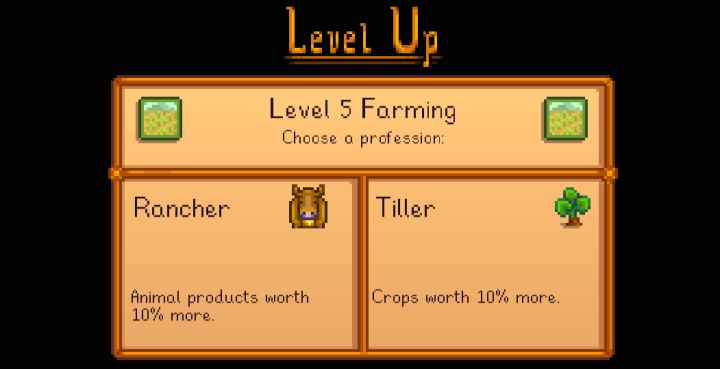Stardew Valley is a game designed by ConcernedApe, and I played the game on Nintendo Switch. In the game, you play as someone who just inherited their farm from their grandfather. The game’s objectives are to build up your farm, earn money from products, and build relationships with other villagers. Overall, I think Stardew Valley does a great job balancing strategies and objects in the game.
Balance in Single-Player Game
Stardew Valley’s target audience is casual gamers, and the difficulty of the game is appropriate to the audience. At the beginning of the game, the player is given most of the tools necessary for early-game tasks (for example, an axe for chopping down trees and a pickaxe for destroying rocks). All quests in the game have no penalty for not completing them within the time limit. A very notable example is the combat system in the game, which is only activated when the player is in the mines. This is the only place players would have to manage their health in addition to their stamina, and if they die or run out of stamina, they simply get “rescued” back to the entrance, losing some items (proportionate with the amount of items they have!). Compare this to another base-building game, Don’t Starve, which is brutal in the early-game (see screenshots).


(Two base-building games, two approaches. Top: Stardew Valley gives you most things you need at the beginning — the 5 tools in the first 5 inventory slots are given to you. Bottom: Don’t Starve starts you with an empty inventory, and any tools you need would need to be made from resources you gather. These two games have different target audience, which influences how difficult each of them are.)
Balance between Strategies in a Game
There are multiple strategies to earn money in Stardew Valley, and while some are better than others, there are no dominantly optimal strategies. The game provides support for a wide variety of strategies in the game. One example of this is the profession choices — there are 5 skills in the game, and at certain levels, player can choose a “profession” out of 2 options. Each profession has certain advantages over the other — for example, for the Farming skill, player can choose to have either their animal products or crop products worth 10% more (see screenshot). Crop products are easier to obtained because player only need to spend a relatively small amount to get seeds, but are worth less. Animal products are much more difficult to obtained because player needs to have enough resources to build coops and barns, and then spends more money to get the animals, but their products sell for more. Therefore, in the aforementioned profession choice, one choice is not better than the other, but the player can choose the choice that fits their preferred strategy more.

(Choosing a profession as part of levelling up skills. Because of the balance between strategies in Stardew Valley, choices like this don’t have a ‘correct’ answer — it depends on the player’s strategy.)
Balance between Game Objects
Transitive: Stardew Valley balances the crops that players can grow with 4 stats: initial cost, sale price, time to harvest, and whether the crop can be harvested multiple times. Something I found interesting was that even in late game, when initial cost of the crops is no longer important (since the player has made a lot of money), time to harvest still creates interesting choices for the player because they have to take into account the number of days left of the season when purchasing crops. Most crops withered when the season changes, so at the end of the season with 7 days left, a crop that harvests in 5 days would be more profitable than one that harvests in 13 days, even if the latter has a higher sale price.

(A comparison between 2 summer crops, Red Cabbage and Starfruit. Starfruit’s sale price is much higher than Red Cabbage’s, but its seeds cost more and it takes more time to harvest. Player would need to make their decision based on how much money they have, how many days are left of the season, and how much money they would earn.)
Intransitive: The combat system in the game balances the different weapon categories (swords, daggers, clubs) by how effective they are against different enemies. We can take swords as the reference category. Daggers have higher speed and are more useful against enemies with fast attacks, but they have a shorter ranger. Meanwhile, clubs are heavier and thus reduce the player’s speed, but have a high knockback and a large range, and thus are useful against enemies that attack in swarms. Because of this, there is no inherently best weapon — it all depends on what enemies the player is up against.
Fruity: One of the objectives for the game is to increase your relationship with a villager who is single and marries them. There are 12 eligible villagers, and each of them has a unique personality and backstory that it is impossible to compare them directly. The game achieves this balance by revealing their personality through dialogue as well as “heart events,” where you learn more about the villager once you’ve reached a certain level of relationship with them (see screenshots).


(Examples of heart events that demonstrates each eligible villager’s unique personality. Top: player learns that Harvey, the doctor, dreamed to be a pilot but couldn’t follow it because he is afraid of height. Harvey still operates a radio hoping to make contact with a pilot. Bottom: player witnesses Shane’s journey from abusing substance to trying to be sober, and participating more in the ranch he rents a room from.)


